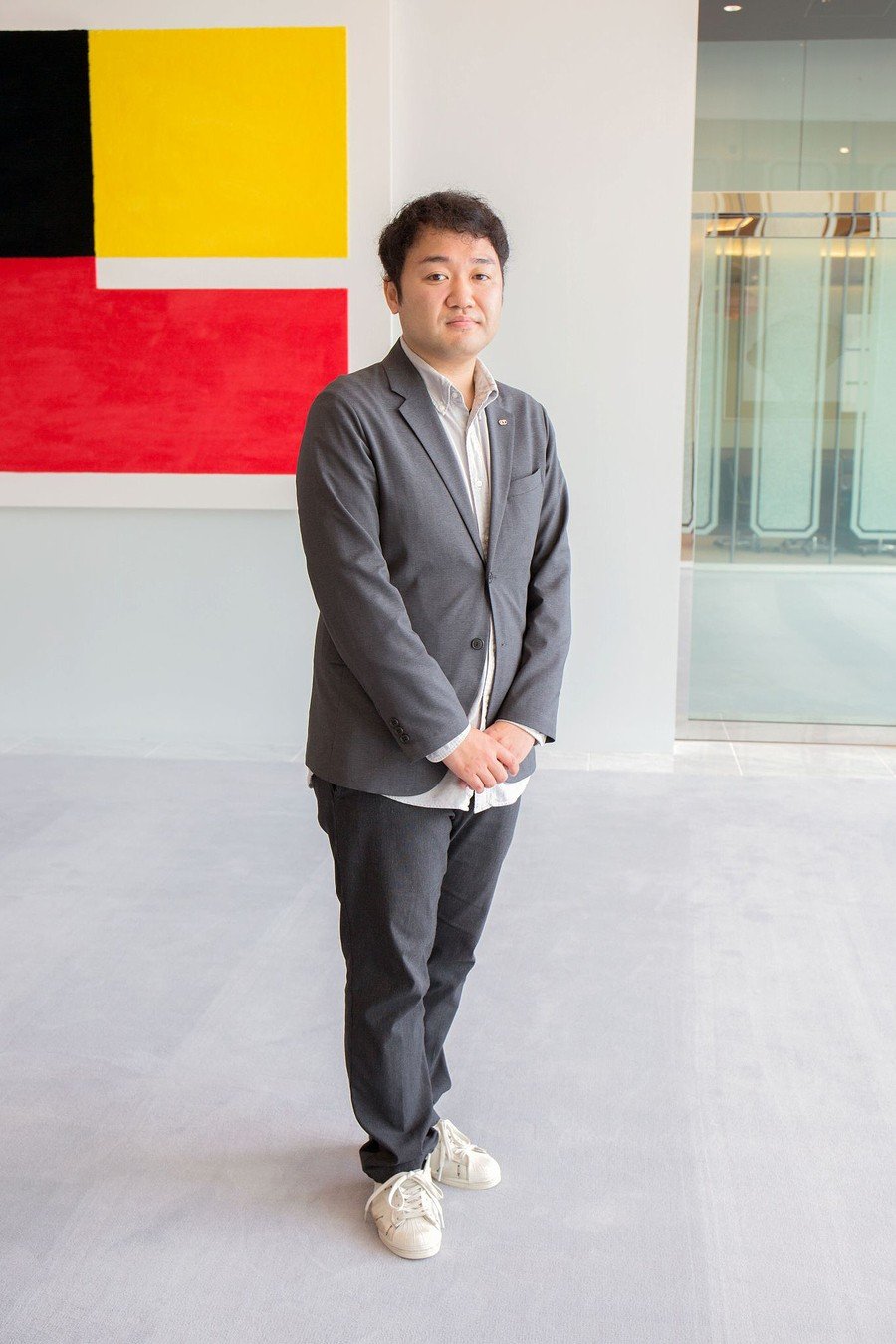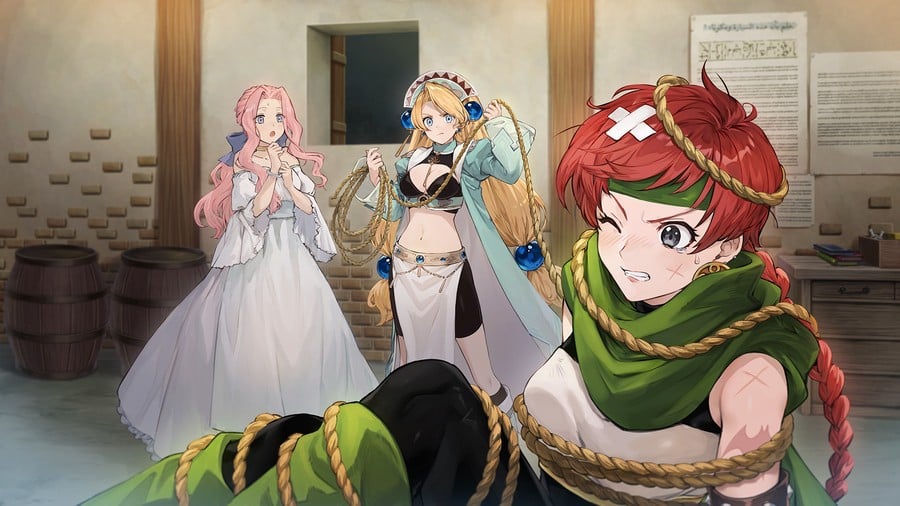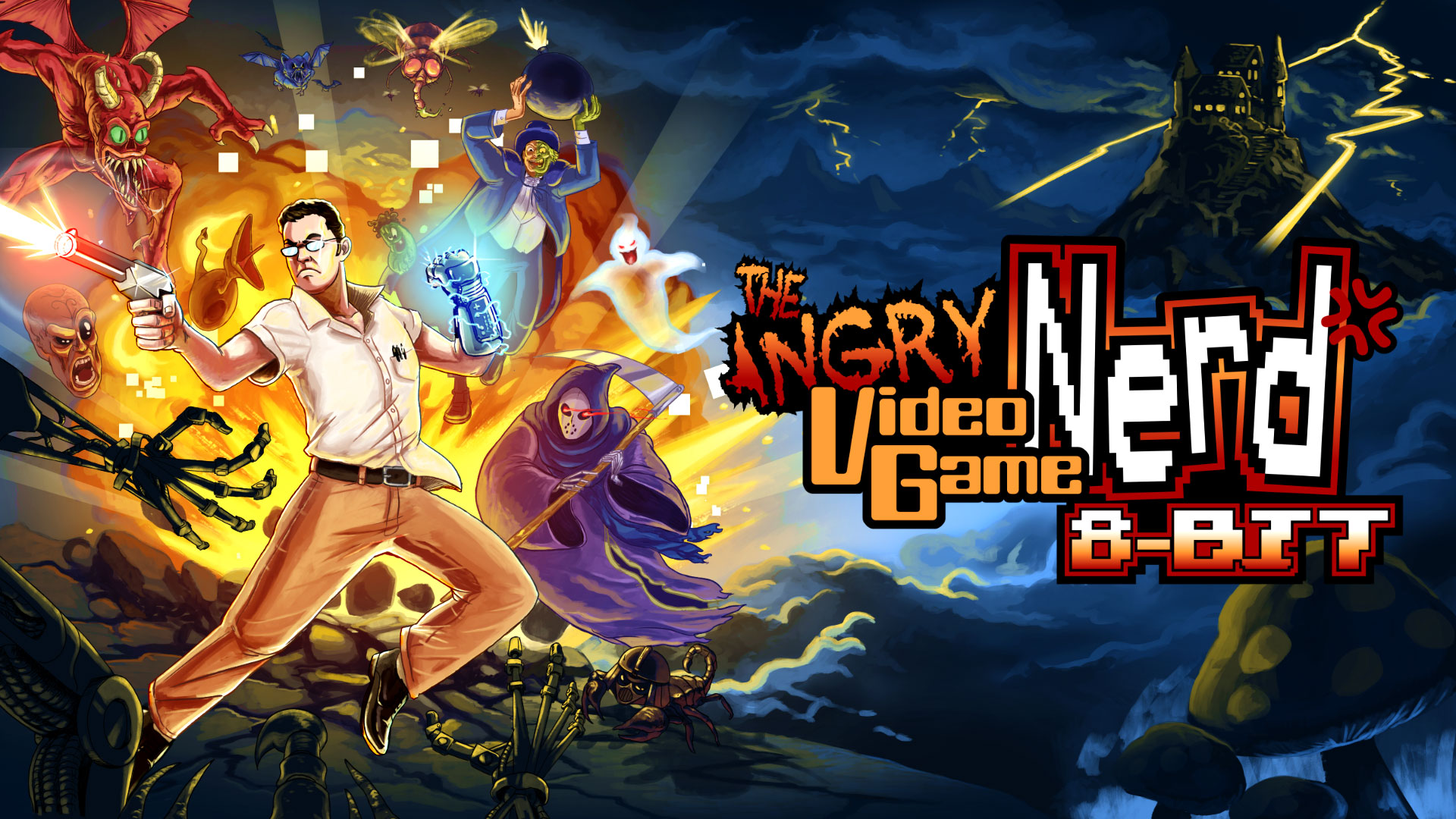
The Ryza games toned down the fan service and refocused to give the series a much-needed boost. Combat was once very much an afterthought, but it has become an integral part of modern Atelier adventures, providing players with deep and engaging battles that combine wonderfully well with the alchemy side of things. It’s a much-improved experience that’s seen us dish out some big old scores for Ryza, with the most recent entry, Atelier Ryza 3: Alchemist of the End & the Secret Key nabbing a very impressive 9/10 in our review.
Buoyed by the success of these most recent outings, Gust has now returned to the genesis of its 26-year-old series in order to bring us a remake of the original Atelier adventure, which sees Atelier Marie get an official English release for the first time ever.
In anticipation of its 12th July release, we had a chat with the head of Gust, Junzo Hosoi, to find out a little more about the upcoming Atelier Marie Remake: The Alchemist Of Salburg.

Nintendo Life: With this remake, you’re going right back to the beginning of the Atelier franchise, to Atelier Marie’s original 1997 adventure. Is there a specific reason why you’ve chosen to revisit this particular story, and now?
Junzo Hosoi, Head of Gust: Well, thanks to the Secret (Ryza) series and other titles released between 2019 and 2023, the number of people interested in the Atelier series itself has increased significantly. We chose to remake Atelier Marie to convey the origin of the series for those who are not really familiar with Atelier Marie.
Does this remake signal an intent to return to more pivotal points in the series’ history beyond Atelier Marie? Could we see revamps of some of the more popular entries from the franchise in the near future?
Well, there is always the possibility. It is one of our goals to have the entire Atelier series, starting with Atelier Marie to the latest title, available in the digital stores. We believe that the next “Atelier” will be created based on some of the comments we receive from those who play both past and recent titles.
The visual style of the original has had a pretty radical overhaul judging by the game’s trailers. Can you go into some detail on what’s been changed exactly and how the graphical elements differ from the 1997 version?
The characters and stages have been newly redesigned from 2D to 3D. Battle scenes are now also in 3D, enabling dynamic presentation with plenty of effects.
On the other hand, 2D character illustrations are used in dialogue events to maintain the atmosphere of the original game. The key elements that have evolved from the original are that the character illustrations are now animated, which allows the characters to be portrayed even livelier.
Beyond the graphical enhancements, has the narrative seen any additions or excisions compared to what fans will know from the original experience?
On top of the original scenario, an amount roughly equivalent to 30-40% of the original story is additional scenarios. The content includes being able to learn new aspects of the characters and the teachers’ feedback on Marie’s work. The purpose of the additions is to increase the depictions of the characters and to increase immersion in the world.
There are no deleted scenarios, but we have adjusted some of the expressions that do not fit modern values.
Can you tell us a little about how the tutorial and navigation systems in Atelier Marie Remake have been expanded and improved to modernise them for new audiences? What are the biggest changes in this regard?
“Professor Ingrid’s Task” is a major change from the original. In the original version, players had to go through the graduation examinations almost without any hints, however, this game is designed so that players can get hints on what they need to do as they progress through the game by completing the tasks given by Professor Ingrid on a regular basis.
We already know a new “Unlimited Mode” has been added to the adventure, but what other all-new elements, if any, have you brought to this reworked version of the game?
I think that being able to walk through the gathering area is the element that changes the playing experience the most. Players weren’t able to walk through the gathering area in the original game, instead, they only had to select whether or not to gather materials, so in this version players can walk around the gathering areas like in recent Atelier series games, and can pick up items accessing materials on the ground.
Battles are now symbol-encountered and players can choose to avoid encounters with enemies, and so the balance has been adjusted accordingly. Furthermore, for those who wish to enjoy the game in the same way as the original, we have also prepared a “simplified gathering” feature that allows gathering through selecting among certain choices.
Several other fun elements have also been added, such as the ability to redecorate the atelier and the addition of a photo mode, which has been popular in recent Atelier games.
Are there any notable differences between the Switch version of the game and versions on other platforms? How does the performance on Switch hold up or compare to other versions?
We have optimized the game for each platform, including visual appearance, so that the game can be played comfortably on any platform.
For new fans who may have just started their Atelier journey with the superb Ryza trilogy, what are the main differences that they’ll notice stylistically, thematically or in terms of the core gameplay loops with regards to this game?
Compared to Atelier Marie, the Secret series, where Ryza is the main protagonist, is a more RPG-oriented title. The game progresses through a storyline, and the player naturally proceeds along the storyline to the ending.
In contrast, Atelier Marie is more like a simulation game. The game is played in a way that allows players to manage their schedules and coins to achieve success and aim for a good ending. However, the game design may be less familiar to those who are used to the recent Atelier games, so we have added additional features such as “Ultimate Mode” and “Professor Ingrid’s Task” for them.
At the same time, some things remain the same. For example, the three major components of the game, “synthesis”, “battle”, and “gathering”, have remained unchanged from Marie to Ryza.
How do you feel Marie differs from Ryza as a protagonist?
I believe that both Marie and Ryza are true-to-life protagonists that many people can relate to, as both characters start in an inexperienced state and grow while struggling with their concerns.
The only difference is that Marie may seem a bit passive compared to Ryza, who is always active and leads everyone. The reason for this is due to the difference in the way each title is played. In Ryza, the main protagonist acts independently to advance the story, while in Marie, the player must choose the main protagonist’s actions.

There’s no physical version of Atelier Marie Remake: The Alchemist of Salburg announced in the West. Is this something that’s likely to change down the line or will fans over here have to make do with the digital versions that have been announced?
There are no plans for a physical release.
This interview has been lightly edited for clarity.
Our thanks to Hosoi-san for speaking to us about this lovely-looking remake.
Looking forward to discovering the origins of the Atelier franchise when Atelier Marie Remake: The Alchemist of Salburg releases on July 12th? Make sure to let us know in the comments.
The Ryza games toned down the fan service and refocused to give the series a much-needed boost. Combat was once very much an afterthought, but it has become an integral part of modern Atelier adventures, providing players with deep and engaging battles that combine wonderfully well with the alchemy side of things. It’s a much-improved experience that’s seen us dish out some big old scores for Ryza, with the most recent entry, Atelier Ryza 3: Alchemist of the End & the Secret Key nabbing a very impressive 9/10 in our review.
Buoyed by the success of these most recent outings, Gust has now returned to the genesis of its 26-year-old series in order to bring us a remake of the original Atelier adventure, which sees Atelier Marie get an official English release for the first time ever.
In anticipation of its 12th July release, we had a chat with the head of Gust, Junzo Hosoi, to find out a little more about the upcoming Atelier Marie Remake: The Alchemist Of Salburg.

Nintendo Life: With this remake, you’re going right back to the beginning of the Atelier franchise, to Atelier Marie’s original 1997 adventure. Is there a specific reason why you’ve chosen to revisit this particular story, and now?
Junzo Hosoi, Head of Gust: Well, thanks to the Secret (Ryza) series and other titles released between 2019 and 2023, the number of people interested in the Atelier series itself has increased significantly. We chose to remake Atelier Marie to convey the origin of the series for those who are not really familiar with Atelier Marie.
Does this remake signal an intent to return to more pivotal points in the series’ history beyond Atelier Marie? Could we see revamps of some of the more popular entries from the franchise in the near future?
Well, there is always the possibility. It is one of our goals to have the entire Atelier series, starting with Atelier Marie to the latest title, available in the digital stores. We believe that the next “Atelier” will be created based on some of the comments we receive from those who play both past and recent titles.
The visual style of the original has had a pretty radical overhaul judging by the game’s trailers. Can you go into some detail on what’s been changed exactly and how the graphical elements differ from the 1997 version?
The characters and stages have been newly redesigned from 2D to 3D. Battle scenes are now also in 3D, enabling dynamic presentation with plenty of effects.
On the other hand, 2D character illustrations are used in dialogue events to maintain the atmosphere of the original game. The key elements that have evolved from the original are that the character illustrations are now animated, which allows the characters to be portrayed even livelier.
Beyond the graphical enhancements, has the narrative seen any additions or excisions compared to what fans will know from the original experience?
On top of the original scenario, an amount roughly equivalent to 30-40% of the original story is additional scenarios. The content includes being able to learn new aspects of the characters and the teachers’ feedback on Marie’s work. The purpose of the additions is to increase the depictions of the characters and to increase immersion in the world.
There are no deleted scenarios, but we have adjusted some of the expressions that do not fit modern values.
Can you tell us a little about how the tutorial and navigation systems in Atelier Marie Remake have been expanded and improved to modernise them for new audiences? What are the biggest changes in this regard?
“Professor Ingrid’s Task” is a major change from the original. In the original version, players had to go through the graduation examinations almost without any hints, however, this game is designed so that players can get hints on what they need to do as they progress through the game by completing the tasks given by Professor Ingrid on a regular basis.
We already know a new “Unlimited Mode” has been added to the adventure, but what other all-new elements, if any, have you brought to this reworked version of the game?
I think that being able to walk through the gathering area is the element that changes the playing experience the most. Players weren’t able to walk through the gathering area in the original game, instead, they only had to select whether or not to gather materials, so in this version players can walk around the gathering areas like in recent Atelier series games, and can pick up items accessing materials on the ground.
Battles are now symbol-encountered and players can choose to avoid encounters with enemies, and so the balance has been adjusted accordingly. Furthermore, for those who wish to enjoy the game in the same way as the original, we have also prepared a “simplified gathering” feature that allows gathering through selecting among certain choices.
Several other fun elements have also been added, such as the ability to redecorate the atelier and the addition of a photo mode, which has been popular in recent Atelier games.
Are there any notable differences between the Switch version of the game and versions on other platforms? How does the performance on Switch hold up or compare to other versions?
We have optimized the game for each platform, including visual appearance, so that the game can be played comfortably on any platform.
For new fans who may have just started their Atelier journey with the superb Ryza trilogy, what are the main differences that they’ll notice stylistically, thematically or in terms of the core gameplay loops with regards to this game?
Compared to Atelier Marie, the Secret series, where Ryza is the main protagonist, is a more RPG-oriented title. The game progresses through a storyline, and the player naturally proceeds along the storyline to the ending.
In contrast, Atelier Marie is more like a simulation game. The game is played in a way that allows players to manage their schedules and coins to achieve success and aim for a good ending. However, the game design may be less familiar to those who are used to the recent Atelier games, so we have added additional features such as “Ultimate Mode” and “Professor Ingrid’s Task” for them.
At the same time, some things remain the same. For example, the three major components of the game, “synthesis”, “battle”, and “gathering”, have remained unchanged from Marie to Ryza.
How do you feel Marie differs from Ryza as a protagonist?
I believe that both Marie and Ryza are true-to-life protagonists that many people can relate to, as both characters start in an inexperienced state and grow while struggling with their concerns.
The only difference is that Marie may seem a bit passive compared to Ryza, who is always active and leads everyone. The reason for this is due to the difference in the way each title is played. In Ryza, the main protagonist acts independently to advance the story, while in Marie, the player must choose the main protagonist’s actions.

There’s no physical version of Atelier Marie Remake: The Alchemist of Salburg announced in the West. Is this something that’s likely to change down the line or will fans over here have to make do with the digital versions that have been announced?
There are no plans for a physical release.
This interview has been lightly edited for clarity.
Our thanks to Hosoi-san for speaking to us about this lovely-looking remake.
Looking forward to discovering the origins of the Atelier franchise when Atelier Marie Remake: The Alchemist of Salburg releases on July 12th? Make sure to let us know in the comments.






